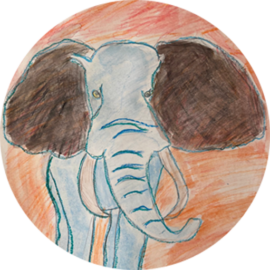Konst & Vetenskap
My adopted alma mater has a tagline – Vetenskap och Konst – that defies exact translation, despite its brevity. The first word unambiguously means science, but the second is what linguists call a false friend. Its literal translation, art, is likely not what the founding fathers had in mind. Craft comes closer, but doesn’t quite cut it either, as Swedish has a separate word for that.
It’s a conundrum familiar to any translator of poetry: sometimes, staying true to the spirit of the original means taking liberties with literal accuracy.
In that vein, I’d argue that the truest translation of konst, in the context of KTH, is technology—even if that exact word is already spoken for, given that it’s the T in KTH.
The late Bosse Sundin—professor of the tantalisingly cross-disciplinary subject history of ideas—devoted some ink to the duality and tension between science and technology.
I’d always thought of the pair as something like Batman and Robin, or Don Quixote and Sancho Panza, with tech as the natural sideshow to science’s main event. But Sundin took that assumption and turned it on its head.
In his account, technology has evolved for as long as humans have existed. Not only is science—born some two and a half millennia ago—a relatively recent affair by comparison, but it has often taken its cues from technology. Until about a hundred years ago, only a few fields, notably electrical and chemical engineering, could truly be said to have sprung from science. This is easy to forget (and perhaps even hard to accept), given how modern technology now seems almost synonymous with applied science.
The British physicist–turned–science historian Derek J. de Solla Price went so far as to argue that the increasingly precise manufacture of scientific instruments should be seen not merely as a by-product of scientific progress, but as one of its primary driving forces. In his view, it was advances in instrumentation—rather than theory alone—that enabled new discoveries and shifted the boundaries of what science could observe, measure, and ultimately understand.
We tend to associate experimentation with modern science, but learning through trial and error also predates the scientific method. I’ve written before about the 18th-century boat builder Fredrik Henric af Chapman, a pioneer in what we now call structured parameter manipulation. He went to sea at fifteen and never looked back. His methods spread quickly across Europe for the simple reason that they produced better boats. It seemed scientific—but Chapman was really a tinkerer: someone fumbling in the dark until they stumbled on something that worked, even if they didn’t yet know why.
Or take Johan August Brinell, the 19th-century farmer’s boy turned blacksmith—familiar to fellow KTH-ers as the namesake of a main thoroughfare on our beautiful campus.
The rest of the world knows him for the Brinell hardness test—an enduring contribution to materials engineering that measures how much a metal deforms under pressure. But what’s often forgotten is how he arrived at it: not through abstract theory, but through careful trial and error, honed in the forge rather than the lab.
Neither Brinell nor af Chapman are outliers; they’re emblematic of a long lineage of practitioners whose insights emerged from getting their hands dirty, rather than from grand theories.
Now that KTH is closing in on its bicentennial, perhaps it’s time to consider flipping the motto. It wouldn’t merely be a cosmetic tweak, but a quiet admission that even today, the hand often leads the head—that tools, not theories, set the pace of progress.
